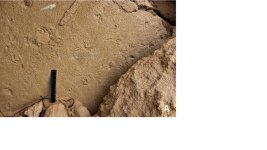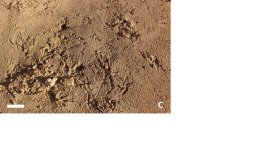Fred Ruhe
Well-known member

Neto de Carvalho, C.; Belo, J.; Figueiredo, S.; Cunha, P. P.; Muñiz, F.; Belaústegui, Z.; Cachão, M.; Rodriguez-Vidal, J.; Cáceres, L. M.; Baucon, A.; Murray, A. S.; Buylaert, J.-P.; Zhang, Y.; Ferreira, C.; Toscano, A.; Gómez, P.; Ramírez, S.; Finlayson, G.; Finlayson, S.; Finlayson, C. 2023
Coastal raptors and raiders: New bird tracks in the Pleistocene of SW iberian Peninsula
Quaternary Science Reviews : Volume 313, 1 August 2023, 108185
Avian traces occurring in Pleistocene aeolianite and beach deposits are rare and relatively poorly known, despite being good paleoenvironmental indicators. Passeriform and raptorial birds are especially rare in the track fossil record. Exceptional tracksites were found in the Malhão formation, a Pleistocene coastal aeolianite unit from the SW mainland Portugal, with subunits in the interval ∼187 to ∼27 ka. Two new forms of avian traces were identified, Corvidichnus odemirensis and Buboichnus vicentinus - attributed to the locomotion of Western jackdaw and the locomotion and predation/feeding behaviour of a large Eagle-owl. The last trace fossil may correspond to the first evidence of a raptorial bird-prey interaction found in action in the fossil record. Typical shorebird tracks and trackways attributed to gulls (Laridae) and curlews, and others tentatively compared with Rallidae, such as Eurasian coot, are also discussed within the aeolianite ichnoassemblages. The tracks here described are the first avian ichnotaxa from the Pleistocene of Europe.
Avian traces occurring in Pleistocene aeolianite and beach deposits are rare and relatively poorly known, despite being good paleoenvironmental indicators. Passeriform and raptorial birds are especially rare in the track fossil record. Exceptional tracksites were found in the Malhão formation, a Pleistocene coastal aeolianite unit from the SW mainland Portugal, with subunits in the interval ∼187 to ∼27 ka. Two new forms of avian traces were identified, Corvidichnus odemirensis and Buboichnus vicentinus - attributed to the locomotion of Western jackdaw and the locomotion and predation/feeding behaviour of a large Eagle-owl. The last trace fossil may correspond to the first evidence of a raptorial bird-prey interaction found in action in the fossil record. Typical shorebird tracks and trackways attributed to gulls (Laridae) and curlews, and others tentatively compared with Rallidae, such as Eurasian coot, are also discussed within the aeolianite ichnoassemblages. The tracks here described are the first avian ichnotaxa from the Pleistocene of Europe.
Enjoy,
Fred
Coastal raptors and raiders: New bird tracks in the Pleistocene of SW iberian Peninsula
Quaternary Science Reviews : Volume 313, 1 August 2023, 108185
Avian traces occurring in Pleistocene aeolianite and beach deposits are rare and relatively poorly known, despite being good paleoenvironmental indicators. Passeriform and raptorial birds are especially rare in the track fossil record. Exceptional tracksites were found in the Malhão formation, a Pleistocene coastal aeolianite unit from the SW mainland Portugal, with subunits in the interval ∼187 to ∼27 ka. Two new forms of avian traces were identified, Corvidichnus odemirensis and Buboichnus vicentinus - attributed to the locomotion of Western jackdaw and the locomotion and predation/feeding behaviour of a large Eagle-owl. The last trace fossil may correspond to the first evidence of a raptorial bird-prey interaction found in action in the fossil record. Typical shorebird tracks and trackways attributed to gulls (Laridae) and curlews, and others tentatively compared with Rallidae, such as Eurasian coot, are also discussed within the aeolianite ichnoassemblages. The tracks here described are the first avian ichnotaxa from the Pleistocene of Europe.
Avian traces occurring in Pleistocene aeolianite and beach deposits are rare and relatively poorly known, despite being good paleoenvironmental indicators. Passeriform and raptorial birds are especially rare in the track fossil record. Exceptional tracksites were found in the Malhão formation, a Pleistocene coastal aeolianite unit from the SW mainland Portugal, with subunits in the interval ∼187 to ∼27 ka. Two new forms of avian traces were identified, Corvidichnus odemirensis and Buboichnus vicentinus - attributed to the locomotion of Western jackdaw and the locomotion and predation/feeding behaviour of a large Eagle-owl. The last trace fossil may correspond to the first evidence of a raptorial bird-prey interaction found in action in the fossil record. Typical shorebird tracks and trackways attributed to gulls (Laridae) and curlews, and others tentatively compared with Rallidae, such as Eurasian coot, are also discussed within the aeolianite ichnoassemblages. The tracks here described are the first avian ichnotaxa from the Pleistocene of Europe.
Enjoy,
Fred





